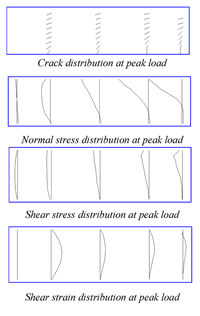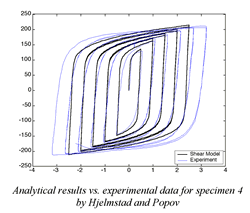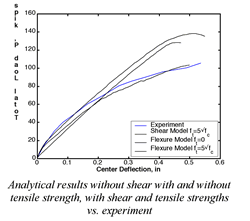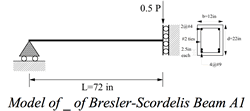Structural members yielding in shear are used in earthquake resistant
systems, such as eccentrically braced steel frames and systems with passive
energy dissipation devices, in a conscious effort to concentrate the
energy dissipation capacity of the structure in components that can be
repaired or replaced after a major earthquake. The simulation of the
energy dissipation capacity of these components is important in the evaluation
of the seismic response of these structural systems. This paper presents
a new beam element for the simulation of the hysteretic behavior of shear-yielding
members. The element is based on a three-field variational formulation
with independent force, displacement and deformation fields. The displacement
field is based on Timoshenko's shear beam theory. The nonlinear response
of the element arises from the integration of biaxial stress-strain relations
over several control sections along the element length. The biaxial material
model accounts for the interaction between normal and shear stress. While
previous concentrated plasticity models involve parameter tuning for
different loading and support conditions, the proposed model is general
in its derivation of the axial force-shear-flexure interaction from the
material response. 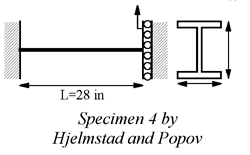 The
proposed model shows the characteristic advantages of force-based beam
elements and is capable of simulating the inelastic
response of short beams with a single element without suffering from
shear locking. The effect of shear is significant in these members during
the elastic and inelastic response. The ability of the model to accurately
represent the hysteretic behavior of short shear-yielding members is
ascertained with correlation studies of analytical results with available
experimental data from shear-link experiments. One such correlation is
shown in the following figure.
The
proposed model shows the characteristic advantages of force-based beam
elements and is capable of simulating the inelastic
response of short beams with a single element without suffering from
shear locking. The effect of shear is significant in these members during
the elastic and inelastic response. The ability of the model to accurately
represent the hysteretic behavior of short shear-yielding members is
ascertained with correlation studies of analytical results with available
experimental data from shear-link experiments. One such correlation is
shown in the following figure.
The model is presently being extended to reinforced concrete members starting with monotonic response. Some preliminary results from the classic beam tests by Bresler-Scordelis are shown in the following figures.
